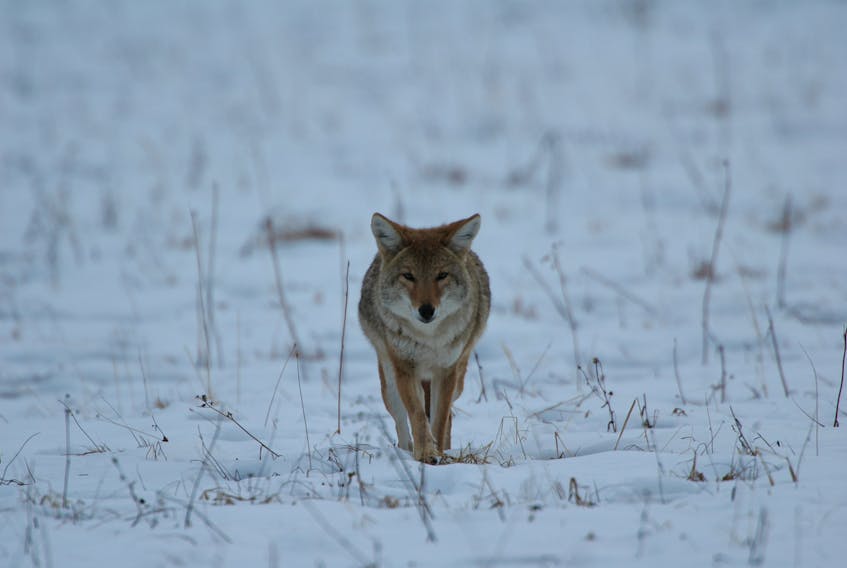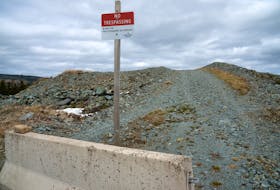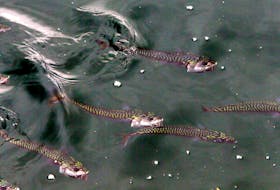ST. JOHN'S, N.L. — Social media was lit up this week with posts from Southlands community residents in St. John's reporting sightings of coyotes in their neighbourhood.
"I am concerned, especially now that the kids are getting outside to play," Kerri Green wrote on the neighbourhood Facebook page.
Several other residents also saw coyote prints in the area.
Anne Cleary-White wrote, "My girls are adults now, but I think about all the kids out there playing and people's pets … even going for a walk, especially on the trails."
So many people expressed concerns, it prompted MHA Paul Lane to consider arranging a public meeting at the neighbourhood community centre to discuss the matter.
"Coyote just passed me running down Kenai Crescent," Tony Reid posted on the same Facebook page after spotting a coyote near his home late one night last week. "Keep a close eye on your small pets."
When contacted by The Telegram, Reid said, "It was just so strange to see it coming through a subdivision."
But according to provincial wildlife experts, it's not uncommon anymore.
With cities expanding and so much subdivision development, coyotes are coming around more often.
"It doesn't surprise me that they're there," Wayne Barney, Fisheries and Land Resource's senior big game biologist, told The Telegram Friday.
"There's a lot of natural habitat around Southlands. The coyote is a pretty versatile animal and there is lots of green space for it to spend its days and lots of opportunity to forage in residential areas. It's a very typical kind of behaviour that they're able to co-exist in urban environments quite well."
“The problems with coyotes is that if they get habituated to people, in any way, shape or form, as with other wildlife they start losing their natural fear. Those types of encounters, with any wildlife, are a lot more dangerous than in a wild environment." — Wayne Barney, Fisheries and Land Resources biologist
Originally a western plains animal, Barney explained, the coyote lived in prairie areas of western Canada. However, increases in agricultural lands increased coyotes' prey, such as deer, rabbits and mice, in the last few decades, while predators, such as grizzly bears and wolves across the country, have been devoid, having moved north, allowing the coyotes to move east, he said.
Barney said coyotes made their way to Newfoundland on ice floes in the Gulf of St. Lawrence, and still do.
The first report of "wolves" in this province was in 1984, when one was spotted coming ashore on the Port aux Port Peninsula. The first confirmed coyote on the island was a pup, found dead on a road in Deer Lake in 1986. The existence of a pup indicated the mother and others were also here, Barney said.
He said it's difficult to get an accurate population count on coyotes in this province. However, he said, there was "an explosion" in their population between 2005 and 2010. Since that peak, with natural selection, the numbers have declined and stabilized.
The eastern coyote, which is in this province, Nova Scotia and New Brunswick, is larger and more robust than its western ancestors. Barney said as coyotes spread eastward, there were wolf genes in the population.
However, he said coyotes, in general, are not dangerous. But he added that, as with other wildlife, it can be dangerous in certain circumstances.
"They're capable of defending themselves, particularly if they feel threatened, if they're startled or if they're trying to protect their pups," said Barney, who noted coyotes were instrumental in the huge decrease in the caribou population in this province from 95,000 in the mid-1990s to about 30,000 now. "In the wild, coyotes are very elusive. They rarely want anything to do with humans.
“The problems with coyotes is that if they get habituated to people, in any way, shape or form, as with other wildlife they start losing their natural fear. Those types of encounters, with any wildlife, are a lot more dangerous than in a wild environment."
"I don't think people need to be alarmed. People need to know they are living with coyotes." — Barney
A young woman died in 2009 after being mauled by coyotes on Cape Breton Highlands National Park's Skyline Trail, but there have been no reports of coyotes attacking a human in this province, Barney said.
"I don't think people need to be alarmed. People need to know they are living with coyotes. Coyotes are part of the urban landscape now in Newfoundland, same as they are in other jurisdictions throughout North America," he said. "There are precautions people can take to ensure their encounters are minimized."
He said people should never feed coyotes, and advises people to keep any food source away from their property, including birdseed, dog or cat food, and organic plant food, such as kelp, caplin and other fish products.
Barney said residents should keep a particular eye on their small pets, particularly dogs, which coyotes could see as a threat, competition for territory or even a food source.
He also recommends property owners pick up fruit that has fallen to the ground from fruit trees.
If you see a coyote, Barney said, back away and "get out of there."
If there's an encounter in an urban environment where the coyote doesn't back away, Barney recommends making as much noise as possible by screaming or yelling, clapping and waving your arms and stomping your feet.
"Just be aware of your environment," Barney said. "Everyone has to do their part to ensure the attractions are removed. … We should be respective of the fact there are coyotes here and take the necessary precautions."
If coyotes become problematic, Barney said, the wildlife division will deal with it.
Anyone sighting a coyote is asked to contact their local Forestry and Wildlife district office. More information on coyotes is available online at https://www.flr.gov.nl.ca/publications/wildlife/LivingWithCoyotes.pdf.
Twitter: @TelyRosie









